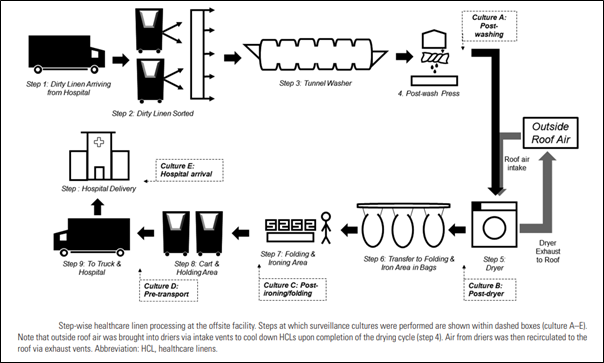Healthcare linens (HCLs) have often been thought to contain Mucorales spores, which present a health hazard for those with compromised immune systems.
Mucorales are widely distributed in the environment, including in soil, vegetation and compost, and spores are easily aerosolised and dispersed, so healthcare providers need to remain vigilant to ensure that these pathogens are not entering facilities where vulnerable patients are present. The subsequent infection, mucormycosis, can be difficult to treat, with high mortality rates.
Healthcare outbreaks of mucormycosis have been identified and ascribed to contaminated healthcare supplies and environmental reservoirs. Outbreaks may be caused by a single or diverse Mucorales species.
Alexander Sunderman and colleagues have analysed HCLs from a healthcare centre in Pittsburgh, USA, and suggested a step-wise plan to reduce the occurrence of Mucorales entering the healthcare facility. Prior to remediation, 20% of HCLs were culture-positive for Mucorales upon arrival at the hospital.

Targeted laundry facility interventions were introduced after inspections and were shown to significantly reduce Mucorales-contaminated HCLs delivered to the hospital. Interventions included adequate ventilation to prevent lint build-up, covering HCLs to prevent accumulation of lint particles whilst awaiting delivery and more thorough cleaning protocols within the washing facility.
Collaboration between infection prevention and laundry facility teams was crucial to successful remediation.
To find out more about this study, you can read the full paper here.
